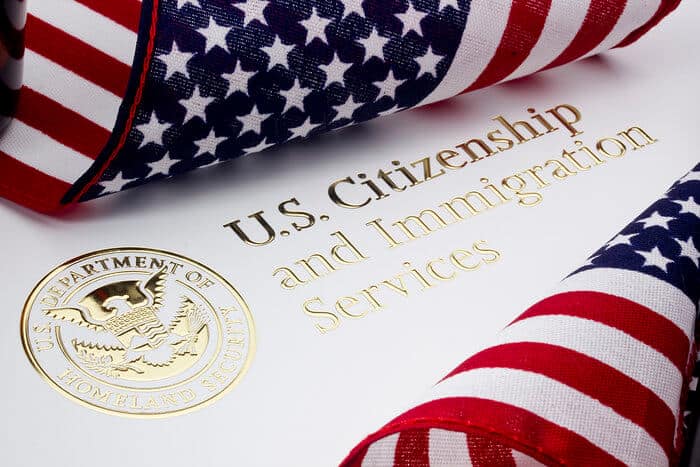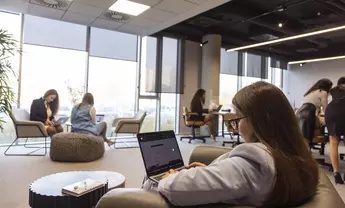- Home
- Articles
- Global Citizen
- How to Get an O-1 Visa: the Ultimate Guide
How to Get an O-1 Visa: the Ultimate Guide
February 11, 2025
For countless business professionals, having the opportunity to work in the United States is something that cannot be passed up.
Offering a great quality of life, higher salaries, world-class healthcare and the freedom to do almost anything you please, the US is truly a dream for many.
It’s stressful sometimes for non-residents to figure out where to begin on their journey to the US. Sure, there are many ways to go about it, but many options are more of a hassle than they’re worth.
For professionals with profound skills in a specific field of work, the O-1 visa has proven more fitting than other visas – especially since the visa allows individuals and their dependents to stay in the country for up to three years at a time.
What is an O-1 Visa?
O-1 visas are non-resident US work visas for individuals who demonstrate outstanding ability in their field.
This could be in the arts, the motion picture or television industries, sports, business, education or the sciences.
If done the right way, you can obtain an O-1 visa by proving you have risen to the top of your profession.
The O-1 visa is often considered the non-resident equivalent of the EB-1, or the ‘Extraordinary Ability Green Card’, which grants individuals permanent residency in the US. For both visas, residents must prove they are at the top of their field.
Although it’s not an automatic transition, the O-1 visa can lead to the beneficiary obtaining their EB-1 visa. Therefore, an O-1 visa is a great way to work your way up to the EB-1 if desired.
The O-1 visa is usually active for three years, but it may be shorter if the visa is granted for a specific event or activity.
If visa holders are able to continue to demonstrate that the event or activity for which they were granted the visa is ongoing, visa extensions may be granted in one-year increments.
Non-immigrants may enter the US ten days before their visa takes effect and may leave up to 10 days after its validity period, but they may not work in the US during those 10 days before or after the visa takes effect.
Fortunately, there are no extension limits, so skilled non-residents may continue to file for extensions on their O-1 visas without worrying about reaching a maximum limit.
As far as dependents – spouses or unmarried children under 21 – of the O-1 visa holder are concerned, they may apply for an O-3 visa or a visa allowing them to accompany the primary visa holder for the duration of their stay in the United States.
Dependents may arrive with the primary holder or at a later date, and they are granted the right to study but not to work in the US.
Before you start thinking about how to get an O-1 Visa, let’s consider the benefits of the visa and the benefits of staying in the US in more detail.
Benefits of Having an O-1 Visa
With an O-1 visa, you can enter the US and accept an employment position requiring an individual of exceptional ability in your field.
As stated above, dependents may stay with you as long as you maintain your O-1 visa status. Your dependents may also attend school while in the US.
With an O-1 visa, you can travel freely in and out of the United States as often as you please, which is especially useful for digital nomads and perpetual travellers who have business worldwide.
There’s no yearly limit on the number of individuals who can receive an O-1 visa. So, although requirements are strict, you never have to worry about missing out on your chance due to being in competition with individuals who may have applied sooner than you.
Additionally, there’s no limit on extensions, so if you’ve already had your visa extended, there’s no need to worry about reaching a limit. Extensions are never guaranteed to be accepted, which is something to keep in mind.
The O-1 allows individuals to be involved in more fields of work than other visas, such as the H or L visa categories.
One of the major benefits of working in the US is the income potential.
For professions in technology, finance, entertainment, health, education and law, making a six-figure income is far more attainable in the US than in many other countries, and this kind of income is possible early in individuals’ careers.
Additionally, if you’re approved for an O-1 visa and have assistants or workers in your country of residence, then they can apply for an O-2 visa and may accompany and assist you in the United States.
While many other countries offer healthcare as well, many US employers not only offer healthcare to salaried employees but pay for it fully or nearly in full.
Also, if you live in a state like Texas, you will not need to pay state taxes, which will lower your tax burden.
Another factor that makes living and working in the US so desirable is its economic diversity.
Because the United States is so vast and offers jobs in almost every industry, the country is able to employ individuals in almost any field – unlike most small countries that offer lower tax rates than the US.
Another smaller, less considered benefit is that you can also sign up for a US mailbox service at little or no cost. The service can scan your mail and forward it to you via email – allowing you the opportunity to decide what is physically forwarded to you and what is not.

Types of O-1 Visas
There are two types of O-1 visas: the O-1A and the O-1B.
The O-1A visa is only intended for individuals demonstrating outstanding abilities in science, education, business or athletics.
The O-1B visa is intended for individuals working in the arts, motion picture or television industries.
Visa holders must demonstrate extraordinary skills no matter what field they’re skilled in, but standards are a little lower for individuals applying for the O-1B visa than the O-1A.
General Visa Requirements
Before we dive into the specifics of each type of O-1 visa, let’s take a look at some of the general requirements that all O-1 visa holders must meet.
Although it’s easier to obtain than you might think, the O-1 sets a high standard with its requirements, which is why you must review them carefully before applying.
Generally, the US is looking for a petition to fill three types of criteria.
The first criteria are known as initial or primary criteria – or criteria that are not based on opinion but rather on true facts, such as whether the beneficiary has won a Nobel Prize or published a book.
The second criteria are defined by opinion letters written by experts who are not within the beneficiary’s circle of influence, which means that they are experts who can look at the primary evidence to determine if the applicant meets the necessary skill and requirement criteria.
The third level of criteria is comprised of evidence supporting scholarly criteria (initial or primary) or expert opinion letters.
Finally, in order to initiate the process of applying for an O-1 visa, applicants must have already been offered a job from a US employer.
Applying for the O-1A Visa
The O-1A visa is primarily meant for people applying in the fields of science, education, business or athletics, and so its requirements are tailored to those fields.
Applicants must first provide proof that they were awarded a major, internationally-recognised award – such as the Nobel Prize or an Olympic Medal. If they have not done so, they must meet three of the following criteria:
1. The beneficiary has received national or international awards or prizes of excellence in their field. For instance, if the beneficiary is a coach, they could have coached someone to win an international award. This accreditation can suffice if there is evidence of the beneficiary’s coaching of the award-winning individual.
2. They’re a member of associations whose memberships require outstanding achievement, judged by nationally or internationally recognised experts in the individual’s specific field. In order to qualify under O-1 visa requirements, the association(s) must be difficult to get into, so it cannot be an organisation within the field that allows anyone to join. There has to be a minimum requirement to become a member of the association.
3. The individual’s work from their specific field has been featured in professional or high-profile trade publications and/or major media like the New York Times or Time Magazine.
4. The applicant has, in some capacity, professionally judged others in the same or a closely related field. This could have been as an individual or as a part of a judging panel. This must also be in addition to their normal position. So, if an individual’s primary job is to judge or coach others, the individual cannot take credit for this criteria.
5. The applicant has articles or books published with notable trade publications. Immigration is looking for pieces that are scholarly or technical like an article or book, so blogs are not sufficient.
6. The applicant has made original scientific, academic or business contributions of major significance in their respective field.
7. The applicant has served in a leading capacity for highly regarded organisations or establishments.
8. They receive a high salary for their skilled services.
As you can see, some of these requirements can be fairly straightforward, while others are more open to interpretation. Regardless, the more categories that you can prove you meet, the more likely you are to be approved.
If the criteria listed do not apply to the beneficiary’s occupation, the petitioner may provide comparable evidence.
However, if that is the case for your application, you should seek professional guidance to fill it out.
Applying for the O-1B visa
Applying for the O-1B Visa
The O-1B visa is meant for individuals with exceptional talent in the arts, motion picture or television industries.
However, the process and requirements for this visa will vary depending on whether or not you are part of the motion picture and television industry.
With Extraordinary Ability in the Arts
If you’re not applying for an O-1B visa as someone with exceptional talent in the television or motion picture industries, then you’ll need to adhere to the following requirements.
To get an O-1B visa, the applicant must show evidence that he or she has been nominated for – or received – significant awards such as a Grammy. Or, they must demonstrate evidence of at least three of the following:
1. The applicant has performed and will perform services as the lead or starring participant in productions having a distinguished reputation. This needs to be evidenced by critical reviews or other published materials by or about the beneficiary in major newspapers, trade journals, magazines, publications, contracts or endorsements.
2. The beneficiary has earned national or international recognition for their achievements as evidenced by critical reviews or other published materials by or about the beneficiary.
3. The applicant has performed and will perform in a lead, starring or critical role for organisations that have a distinguished reputation as evidenced by articles in newspapers, trade journals, publications or testimonials.
4. There’s proof of major commercial or critically acclaimed successes as shown by title, rating, standing in the field, box office receipts, motion picture or television ratings and other achievements reported in major newspapers or other publications.
5. The beneficiary has received significant recognition for achievements from organisations, critics, government agencies or other experts in the field that the individual is engaged in. Testimonials must indicate the author’s authority, expertise and knowledge of the individual’s achievements.
6. The beneficiary may show evidence that they command or will command a high salary or other substantial remuneration.
If the criteria listed do not apply to the beneficiary’s occupation, the petitioner may provide comparable evidence, but they should seek professional guidance when doing so.
Additionally, for US immigration, the field of arts is defined as fine arts, visual arts, culinary arts, performing arts, directors, set designers, lighting designers, sound designers, choreographers, conductors, orchestrators, coaches, musical supervisors, costume designers, makeup artists, flight masters and stage technicians. ‘Arts’ are not limited to this list and may include other fields of work if justified.
With Extraordinary Ability in the Motion Picture or Television Industry
Requirements for O-1B visas for individuals in this category are the same as the previously stated requirements for the O-1B visa.
However, unlike the requirements for artists in the non-motion picture or television industry category, regulations do not clearly permit the use of comparable evidence for the previously listed criteria.evision industry category, regulations do not clearly permit the use of comparable evidence for the previously listed criteria.
Application Process for the O-1 Visa
If you meet the criteria for the O-1 visa, then you can begin preparing your application.
To begin the application process, petitioners need to file Form I-129, the petition for a Non-immigrant Worker with the United States Citizenship and Immigration Service (USCIS) office listed on the form.
Form I-129 may not be filed more than one year before an individual needs to obtain the O-1 visa. However, to avoid delays, it should be filed no later than 45 days before the date of employment.
It must be noted that the O-1 visa petition must be filed by a United States employer or agent.
You cannot file the petition on your behalf because the O-1 visa is not eligible for self-petition. The US company or agent is the petitioner, and the person wishing to obtain the O-1 visa is the beneficiary.
The following section will, therefore, provide an overview of all major components of the O-1 visa application and application process. For case-specific guidance, you should seek professional advice.
O-1 Visa Processing Fees
The O-1 visa application costs US$205. You’re required to pay this fee in order to move forward with your visa application.
Besides the application fee, you might be required to pay other fees depending on your country of residence.
When all necessary fees have been paid, it’s important to keep receipts as you will need to provide proof that you’ve paid all fees.
You should also consider that many individuals applying for an O-1 visa hire a lawyer to help them through the application process – especially if said individuals are generally uneducated on the legalities pertaining to O-1 visas.
So, that could certainly be an added cost unless you intend to go through the process without legal help.
There are also fees pertaining to premium processing, which will be discussed later, in addition to bringing dependents with you – so these are things you might consider before beginning the application process.
US O-1 Visa Consultation
In order to obtain your O-1 visa, you will need to complete a visa consultation. During this consultation, a written advisory opinion is required from a peer group or person with expertise in the beneficiary’s area of skill.
If the individual at hand has extraordinary achievement in the motion picture or television industry, the consultation has to come from an appropriate labour union and management organisation that also has expertise in the beneficiary’s area of skill.
When the consultation is complete, the petitioner needs to submit the consultation to USCIS.
A copy of the consultation without watermarks or other distinctive marks indicating authenticity will raise doubts about its legitimacy and likely delay processing, so it’s important that petitioners submit the final document the first time around.
However, there are a handful of exceptions to this consultation requirement.
If the petitioner can provide evidence that an appropriate peer group – including a labour organisation – does not exist, the decision will depend on the evidence of record.
Additionally, consultation may be waived for someone with exceptional ability in the field of the arts if the individual is seeking readmission to perform similar services within two years of a previous consultation.
If you qualify for one of these exceptions, then you may submit a waiver request with a copy of the previous consultation to waive the additional one.
Written Contract
Additionally, you’ll need to provide USCIS with a copy of any written contract between the petitioner and the beneficiary and/or a summary of any oral agreements.
USCIS accepts oral contracts if you can provide various elements confirming their authenticity.
These elements include emails between both parties, a written summation of the terms of the agreement and any other evidence demonstrating that an oral agreement was created.
The summary must contain what was offered by the employer and what was accepted by the employee.
Summaries do not have to be signed by both parties in order to establish the oral agreement. However, they do have to document the terms of employment offered and that the beneficiary has agreed to the offer.
Travel Itineraries
Another item that must be included is a description of the nature of events or activities that you will be participating in. This must include their beginning and ending dates, and a copy of itineraries must be submitted, if applicable.
The petitioner has to provide evidence that there are events or activities in the beneficiary’s field of extraordinary skill for the validity period requested.
Agents for the Visa
In order to apply for a US O-1 visa, you need to be sponsored by a US agent.
Sometimes, a US agent is the actual employer of the beneficiary, the representative of both the employer and the beneficiary or a person or entity authorised by the employer to act for – or in place of – the employer as its agent.
Agent for Multiple Employers
Any petitioner who is filing as an agent for multiple employers must prove that they are authorised to act as an agent for the other employers.
Agents filing I-129 petitions for more than one employer must also include documentation such as a complete itinerary, names and addresses of places they’ll be performing, contacts, explanations and anything else requested.
When USCIS approves the visa petition, the beneficiary may apply at the US embassy or consulate for the visa. The Department of State establishes visa application processing and issuance fees.
Agent Performing the Function of an Employer
Agents performing the function of an employer must submit an I-129 that includes a contractual agreement between the agent and the beneficiary that specifies the wage offered and any other terms of employment.
This may be a summary of the terms of the oral agreement or a written contract.
Contracts are not required between the beneficiary and the entities that will ultimately utilise the beneficiary’s services.
Petitions requiring a person to work in more than one location must include an itinerary with dates and locations of work.
No exceptions are granted by USCIS towards the itinerary requirement when the petition is filed by an agent performing the function of an employer.
USCIS does, however, provide flexibility on how detailed the itinerary must be and considers industry standards when determining whether the itinerary requirement has been met.
At a minimum, the itinerary should indicate the type of work the beneficiary will be engaged in and where and when the work will take place.
USCIS relies on the contractual agreement provided with the petition to determine whether the agent is functioning as the employer of the beneficiary.
The agreement must establish the nature of the working relationship between the agent and the beneficiary and should clearly lay out how the beneficiary will be paid.
Collectively, if the terms and conditions of employment show a level of control over the beneficiary’s work being relinquished to the agent, the agent may be able to show that they’re performing the function of an employer.
This determination is made on a case-by-case basis and depends on the contractual agreement, regardless of whether it’s oral or written.
Finally, this petition must list the wage offered to the beneficiary. US regulations do not contain a prevailing wage requirement, so no particular wage structure is required.
Providing a detailed description of the wage offered and that the wage offered was agreed upon may satisfy the petition requirement.

Agent for Foreign Employers
Agents filing I-129 petitions for foreign employers have to submit the minimum evidence as required for all O-1 petitions.
Copies of any written contracts between the foreign employer and the beneficiary or a summary of the terms of an oral agreement under which the beneficiary will be employed may be accepted.
Additionally, an explanation of the nature of any events or activities, the beginning and end dates for those events or activities and a copy of any itineraries for those must also be included in the petition. A written advisory opinion from the appropriate consulting entities is also required.
US regulations do not require additional documentary requirements for an agent filing on behalf of a foreign employer, but the foreign employer is responsible for complying with all applicable laws and regulations.
Visa Processing Time
After conducting your interview, you must wait for the visa application to be processed.
It typically takes 2-3 months for O-1 visa processing, but if you’d like to shorten this time, you can pay an additional US$2,805 for premium processing.
Premium processing ensures your visa will be processed within fifteen business days. When the visa has been processed, you will be notified as to whether you were approved or denied.
When USCIS approves the visa petition, you may apply for the visa at the US embassy or consulate. The US Department of State establishes visa application processing and issuance fees.
The Approval Process
When your petition has been approved, you can apply for an O-1 visa at the US consulate in your home country.
When gathering documents for your O-1 visa application, you’ll need to submit:
- Your passport
- Form DS-156 (the non-immigrant visa application)
- An application fee of US$100
- A recent photograph
- A full copy of the O-1 petition that includes all supporting documentation
- The approval notice (Form I-797) of the O-1 petition.
How to Make Changes to Your O-1 Visa
If your circumstances change while you’re in the US, then you’ll need to ensure that those changes are reflected in your O-1 visa.
The following section will, therefore, discuss some common O-1 changes and how to address them. However, if you must make changes to your visa, we recommend seeking professional guidance.
Requirements for Changing Employers
An O-1 visa holder in the US who wants to change employers must have their new employer file an I-129 with the USCIS office.
If the petition was filed by an agent, an amended petition must be filed, providing evidence relating to the new employer with a request for an extension of the beneficiary’s stay.
Material Changes in Employment
If any change occurs regarding the terms and conditions of the beneficiary’s employment or the beneficiary’s eligibility, petitioners must file an amended petition on Form I-129 with the service centre where the original I-129 was filed.
Special Rules for Athletes with an O-1 Visa
If a professional athlete with O-1 non-immigrant status is traded from one team to another, employment authorisation will continue with the new team for 30 days.
During those 30 days, the new employer must file a new I-129. The act of the new employer filing the new I-129 within 30 days extends employment authorisation at least until the petition is adjudicated.
If the new employer does not file a new I-129 within those 30 days of the trade, the professional athlete will lose his or her employment authorisation.
Furthermore, the athlete will also lose his or her employment authorisation if the new Form I-129 is denied.
Return Transportation
If your O-1 status is terminated for any reason other than voluntary resignation, your employer has to pay for the reasonable cost of return transportation to your last place of residence before entering the US.
If an agent filed a petition for your employer, your agent and your employer are equally responsible for paying return transportation costs.
How to Get a US O-1 Visa: FAQs
The eligibility criteria for an O-1 visa are strict, but if you qualify, the application process tends to be reasonably smooth.
In our experience, the processing time can take anywhere from three weeks to four months.
Data suggests an acceptance rate between 80-95% for O-1 visa applications.
There is still plenty of scope to be accepted for an O-1 visa in this case, although you’ll need to submit more evidence of your expertise.
You’ll still need to show evidence of your expertise to obtain an O-1B visa, although this evidence is likely to differ for jobs in the arts.
The processing fee is US$205, although you can choose to pay US$2,805 for premium processing.
How to Obtain an O-1 Visa
Obtaining an O-1 visa might seem like a complex, lengthy and expensive process. While that’s probably true, it should pay off if it’s the most logical fit for your needs.
The O-1 visa is ideal for business professionals who demonstrate profound skills in their field and wish to work in the US. The O-1 visa is also ideal for someone who plans on applying for the EB-1 visa, or the ‘Extraordinary Ability Green Card’, one day.
To summarise, the process for an O-1 visa is as follows:
- Before you begin the process, you must determine whether you are applying for an O-1A or an O-1B visa. The O-1B is only for professionals in the arts, motion picture and television industries – all other professions fall under O-1A.
- You must create a petition via Form I-129 and submit it to USCIS. They are looking for three criteria to be met: initial/primary criteria (involving scholarly or technical work), opinion letters written by experts and evidence supporting the first or second type of criteria.
- You will then submit consultation documents with watermarks or distinctive marks to prove authenticity, as well as a contract (written or oral) and itinerary documents to USCIS with Form I-129. If you have not received a major, internationally recognised award, you must meet three criteria out of the list of criteria for the O-1A and O-1B visas.
- From there, you should pay your fees and wait for approval.
If you need help determining whether the O-1 visa will work for you, you’re welcome to reach out to our experts.



How To Get the Portugal Startup Visa in 2025: Rules, Benefits, and Costs
The Portugal Startup Visa is a residency program for non-EU citizens who want to bring innovative business ideas to Portugal. The program is suitable for tech-driven companies and has no minimum investment requirements, which makes it appealing to international entrepreneurs. In this guide, we’ll explore the Portugal Startup Visa and cover: What Is the Startup […]
Read more

Portugal Residency Requirements: Eligibility and Application Process Explained
Portugal allows foreigners to obtain residency permits and live in the country for an extended period. Depending on the type of visa, foreigners can secure temporary or permanent residence and eventually apply for Portuguese citizenship. In this guide, we will outline the Portugal residency requirements for expats, focusing on the following: Obtaining Portuguese Residency: An […]
Read more

Portugal Entrepreneur Visa: Benefits, Requirements, and Application
If you wish to relocate your business to Portugal or start a new one in the country, obtaining the Portugal Entrepreneur Visa (also known as the D2 Visa) is among the first steps you should take. To help you complete the process as effortlessly as possible, this guide will cover: What Is the Portugal D2 […]
Read more




